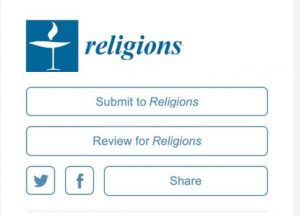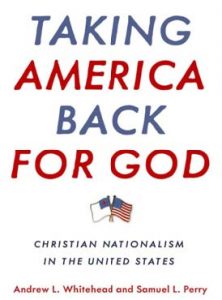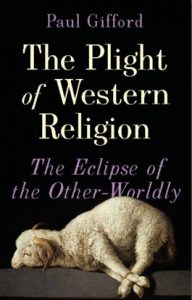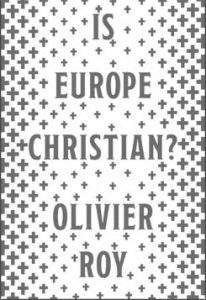

![]() Australia shares with other Western countries the conflicting realities of a secularizing population alongside the growing public presence and diversity of religions. A special issue of the online journal Religions looks at this trend, especially concerning how the Australian government and other public institutions manage the new diversity. The introductory article notes that increasing proportions of government spending are channeled through religious agencies while political controversies mushroom involving everything from urban planning to marriage law to border control. The articles include critiques of the policy goal of social integration in the face of religious diversification and the ways these developments play out in a country with more limited provisions for religious freedom than other secular societies. Particularly noteworthy is an article on the megachurch networks that have emerged in Australia in recent decades (and spread worldwide), such as Hillsong, C3 Church, Citipointe Church, Planetshakers, and Influencers Church, and how they benefited from the trend of privatization taking place in the 1990s. Author Malread Shanahan argues that a range of financial services caused by marketization and the implementation of superannuation allowed these megachurches to expand beyond their primary worship functions, such as in starting schools and colleges and charities, as well as in extending their global reach.
Australia shares with other Western countries the conflicting realities of a secularizing population alongside the growing public presence and diversity of religions. A special issue of the online journal Religions looks at this trend, especially concerning how the Australian government and other public institutions manage the new diversity. The introductory article notes that increasing proportions of government spending are channeled through religious agencies while political controversies mushroom involving everything from urban planning to marriage law to border control. The articles include critiques of the policy goal of social integration in the face of religious diversification and the ways these developments play out in a country with more limited provisions for religious freedom than other secular societies. Particularly noteworthy is an article on the megachurch networks that have emerged in Australia in recent decades (and spread worldwide), such as Hillsong, C3 Church, Citipointe Church, Planetshakers, and Influencers Church, and how they benefited from the trend of privatization taking place in the 1990s. Author Malread Shanahan argues that a range of financial services caused by marketization and the implementation of superannuation allowed these megachurches to expand beyond their primary worship functions, such as in starting schools and colleges and charities, as well as in extending their global reach.
![]() Taking America Back for God: Christian Nationalism in the U.S. (Oxford University Press, $29.95), by Andrew Whitehead and Samuel Perry, makes the argument that Christian nationalists are declining but represent a looming threat to American democracy.
Taking America Back for God: Christian Nationalism in the U.S. (Oxford University Press, $29.95), by Andrew Whitehead and Samuel Perry, makes the argument that Christian nationalists are declining but represent a looming threat to American democracy.
 Of course, the factor that makes Christian nationalism relevant is the campaign and presidency of Donald Trump, but much of the book spends as much time defining the term and distinguishing it from other forms of religious conservatism as examining it as a social and religious movement. The authors see Christian nationalism as intersecting with evangelical Christianity (one reason why so many evangelicals voted for Trump) but is distinct from it due to its more political approach to questions of national identity, national boundaries, and gender relations and how they are related to the idea that America is, or should be, a Christian nation. The political thrust of Christian nationalism even distinguishes it from theocratic movements, such as Christian Reconstruction, because the former identities America’s founding documents as divinely inspired. But through their analysis of surveys and in-depth interviews, Whitehead and Perry find that this core of Christian nationalists (categorized as the “ambassadors”) comprise only a small percent of the American population and are declining (because of their advanced ages), yet, taken together with a larger group who are labeled the “accommodationists,” they can represent almost half of the American population. But accommodationists may only agree with one of several distinguishing markers of Christian nationalism, such as that the government should promote Christian principles or that the success of the United States is part of God’s plan. The authors also find adherence to such principles as influencing, though not necessarily causing, negative views of Muslims and Mexicans. The book is short on accounting for the ways organizations have harnessed such Christian nationalism (and, in turn, shape members’ views); aside from brief vignettes of an organization such as “Wall Builders” and the First Baptist Church of Dallas, there is little sense given to the reader of what Christian nationalism looks like in action.
Of course, the factor that makes Christian nationalism relevant is the campaign and presidency of Donald Trump, but much of the book spends as much time defining the term and distinguishing it from other forms of religious conservatism as examining it as a social and religious movement. The authors see Christian nationalism as intersecting with evangelical Christianity (one reason why so many evangelicals voted for Trump) but is distinct from it due to its more political approach to questions of national identity, national boundaries, and gender relations and how they are related to the idea that America is, or should be, a Christian nation. The political thrust of Christian nationalism even distinguishes it from theocratic movements, such as Christian Reconstruction, because the former identities America’s founding documents as divinely inspired. But through their analysis of surveys and in-depth interviews, Whitehead and Perry find that this core of Christian nationalists (categorized as the “ambassadors”) comprise only a small percent of the American population and are declining (because of their advanced ages), yet, taken together with a larger group who are labeled the “accommodationists,” they can represent almost half of the American population. But accommodationists may only agree with one of several distinguishing markers of Christian nationalism, such as that the government should promote Christian principles or that the success of the United States is part of God’s plan. The authors also find adherence to such principles as influencing, though not necessarily causing, negative views of Muslims and Mexicans. The book is short on accounting for the ways organizations have harnessed such Christian nationalism (and, in turn, shape members’ views); aside from brief vignettes of an organization such as “Wall Builders” and the First Baptist Church of Dallas, there is little sense given to the reader of what Christian nationalism looks like in action.
![]() Two recent books on religion in Europe and the West suggest that secularization is proceeding apace on the continent, although they provide unique and contrasting explanations about this process. Paul Gifford’s The Plight of Western Religion (C. Hurst and Company, $40) is the more pessimistic of the two, arguing that even much of what we might take as religious vitality are actually secularized (and therapeutic) versions of the real thing. It is not exactly a new argument made by secularization theorists, but Gifford, a specialist in African religion, goes the extra mile by sidestepping quantitative studies on decreased church attendance and affiliation and attempting to show that the modern modes of cognition and consciousness have been irreversibly transformed by Western science and the Enlightenment, so much so that there is little hope of religious reversal. The author is not arguing that religion and science are in contradiction to each other, as the new atheists might (he acknowledges that early science had religious foundations), but rather that the scientific and technical worldview became so dominant that it marginalized religious explanations of the world—even if it took almost two centuries (at least until the 1960s) for the secular mindset to filter down to the general public.
Two recent books on religion in Europe and the West suggest that secularization is proceeding apace on the continent, although they provide unique and contrasting explanations about this process. Paul Gifford’s The Plight of Western Religion (C. Hurst and Company, $40) is the more pessimistic of the two, arguing that even much of what we might take as religious vitality are actually secularized (and therapeutic) versions of the real thing. It is not exactly a new argument made by secularization theorists, but Gifford, a specialist in African religion, goes the extra mile by sidestepping quantitative studies on decreased church attendance and affiliation and attempting to show that the modern modes of cognition and consciousness have been irreversibly transformed by Western science and the Enlightenment, so much so that there is little hope of religious reversal. The author is not arguing that religion and science are in contradiction to each other, as the new atheists might (he acknowledges that early science had religious foundations), but rather that the scientific and technical worldview became so dominant that it marginalized religious explanations of the world—even if it took almost two centuries (at least until the 1960s) for the secular mindset to filter down to the general public. 
Whether one agrees or not with Gifford, he is widely read in contemporary religion and provides interesting case studies to make his case. Given his work on African religion, he holds the “enchanted” world of African Christians, with even their politics and sports events suffused with supernatural references, as the standard for religious vitality. He then looks at everything from the New Age to Catholicism after Vatican II to the not-so exceptional nature of American religion, as seen in megachurches, the prosperity gospel (although he doesn’t explain its rapid global dissemination from the U.S.), Christian colleges, evangelical support for Trump, to argue that these religious forms have experienced “internal secularization” and the endurance of cultural (and capitalist) religion rather than authentic supernaturalism.
Olivier Roy’s short but informative book Is Europe Christian? (Oxford, $19.95) bears some similarities to Gifford’s, mainly in the way both forecast the rapid de-Christianization of Europe. But where Gifford sees the eclipse of other-worldly Christianity with cultural religion remaining, Roy sees Christians in Europe living outside of culture as they seek to preserve their faith in a continent with diametrically opposed social values. Such culture, by which Roy means the traditions and symbols that give shape to religious institutions, is replaced by an emphasis on returning to the sources of religion and protesting on “culture war” issues, especially by renewal and revival movements in Catholicism (evangelical Protestantism is too driven by immigration and globalization to show much concern about the Christian nature of Europe, he adds). Meanwhile, Roy writes that mainline Protestant bodies have “self secularized” by largely accepting the values and lifestyles of European society on progressive sexual and family life issues.
Like Gifford, Roy sees the embrace of Christian symbols and heritage by populist and nationalist parties as having little to do with Christian revitalization; in fact, populists are generally in sync with the new secular value system (they will not challenge abortion or same-sex marriage laws) and criticize religious leaders and institutions for protesting against their anti-immigrant and anti-Muslim positions (though they find more agreement here). The author concludes that religion in general has become defined as a “problem” by secular Europe, especially through the passing of ever-more restrictive laws against public and even private expression of faith— from banning Muslim headscarves to circumcision. Such secularism can also be seen in the Christian symbols (such as the crucifix) are being redefined as cultural markers rather than religious ones by various European governments. Christians may be too preoccupied with their own internal problems, such as dealing with sex-abuse scandals, to help address what Roy sees as the mounting values crisis in Europe, where “the social contract has ceased to function, as liberal society contains antagonistic groups that take non-negotiable moral issues as their starting points, as matters that are not subject to debate.”